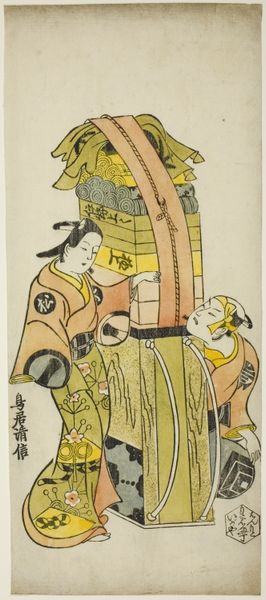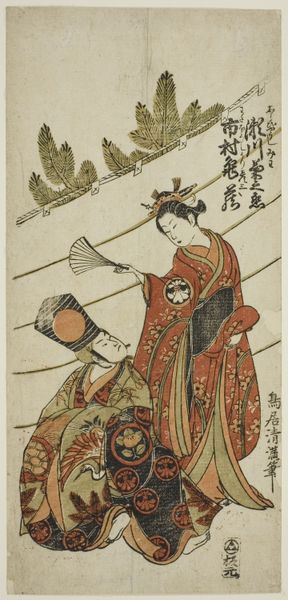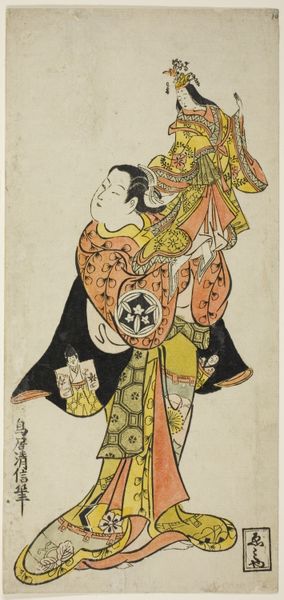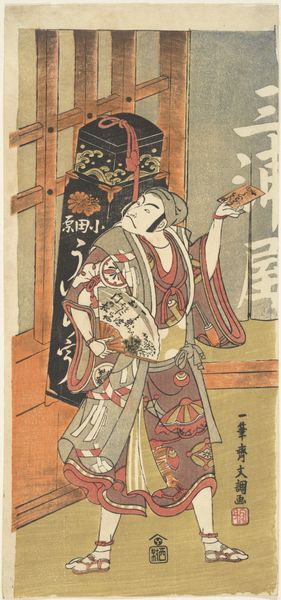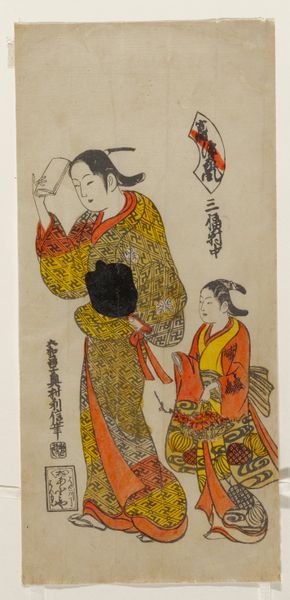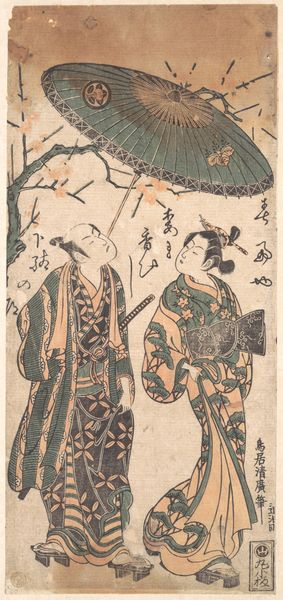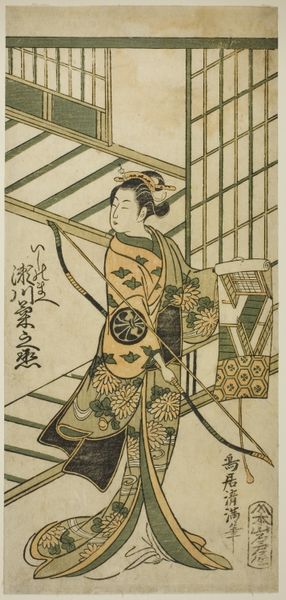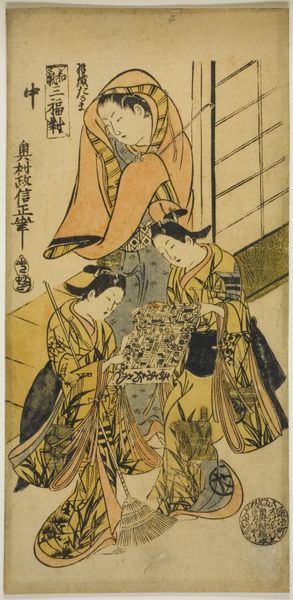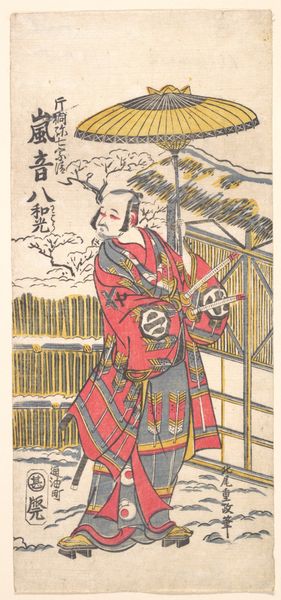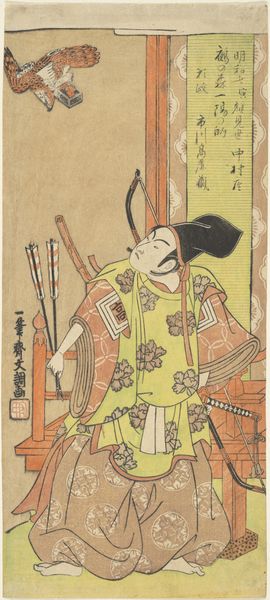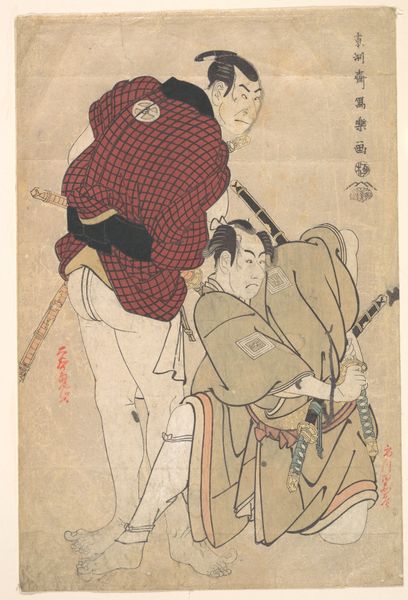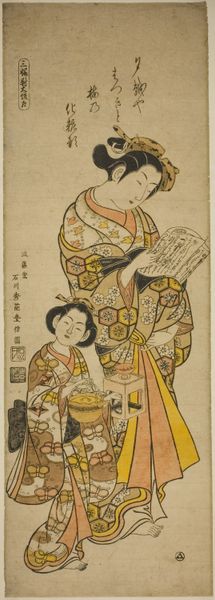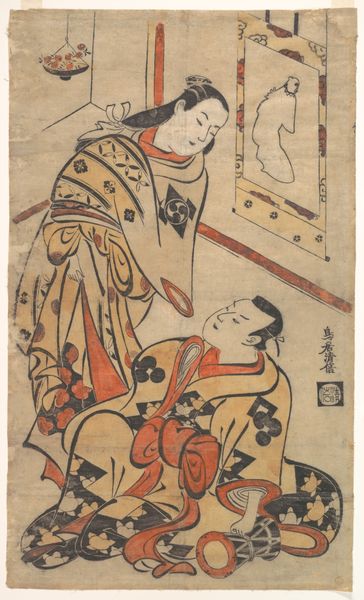
The Actors Ichimura Uzaemon IX as Nagoya Sanzaburo and Ichimura Kamezo II in the play "Higashiyama-dono Kabuki no Tsuitachi," performed at the Ichimura Theater in the eleventh month, 1766 1766
0:00
0:00
print, woodblock-print
# print
#
asian-art
#
ukiyo-e
#
japan
#
woodblock-print
#
genre-painting
Dimensions: 12 1/4 × 5 1/2 in.
Copyright: Public Domain
Editor: This woodblock print, made in 1766 by Torii Kiyomitsu, depicts actors in a Kabuki play. It feels like we’re glimpsing a specific, fleeting moment on stage. How do you interpret this work within its cultural context? Curator: This print exemplifies *ukiyo-e*, or "pictures of the floating world," reflecting the burgeoning urban culture of Edo-period Japan. These prints democratized art, making theatrical performances accessible to a wider public beyond the elite. What is the role of theater at the time? What kinds of patrons or art consumers do you think saw these pieces? Editor: Presumably the rising merchant class would’ve consumed these. This is their entertainment, reflected in accessible, mass-produced art? Curator: Precisely. The play's specific details - actors' names, theater - root the print in a particular social reality. Yet the stylized figures, flattened perspective, and bold patterns abstract from it. Think about how the actors are both individuals and archetypes. Consider the politics embedded in representing leisure and performance for a specific audience. How do museums shape art accessibility today compared to 18th century woodblock prints? Editor: It is amazing to think about art being for a wide variety of people. It helps me reflect on the accessibility and purpose of art today and in other periods. Curator: Indeed. These images are powerful cultural documents, offering glimpses into a complex society through the lens of popular entertainment and evolving artistic technologies. And each viewing helps us engage in art that continues to shape public opinion.
Comments
No comments
Be the first to comment and join the conversation on the ultimate creative platform.
